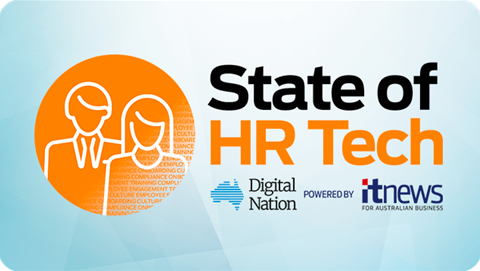This year's United Nations theme for International Women's Day is Cracking the Code focusing on the importance of bold, transformative ideas, inclusive technologies, and accessible education in combating discrimination and the marginalisation of women globally.
Verna Myers, VP of inclusion strategy at Netflix once said, “Diversity is being invited to the party; inclusion is being asked to dance.”
To be more inclusive, organisations should make strides in bringing in progressive ideas, programs and technologies to enfranchise women in the workplace to give them a sense of belonging.
Innovative technology, programs or ideas can be used as an incredible lever to empower inclusion within an organisation, according to Michelle Schuberg, CEO at metaverse for business platform Curiious.
She said, “The opportunity for people to have an equal footing and have equity in the way that their voices are heard, whether that is about gender inclusivity or geographic inclusivity, we see a lot of impact based on people's proximity to a metro centre, and then you layer any gender prejudices on top of that.
“The ability to bring people closer together with immersive technology that is becoming much more mature and business ready, it means that anyone and everyone can have a voice,” she said.
In this cover story, Digital Nation Australia spoke to several women about the innovative ideas, programs and technologies they use in their organisations to enhance inclusion.
Women in cybersecurity
Daniela Fernandez, head of information security at PayPal Australia is involved in inclusion efforts inside and outside the organisation.
She is the Sydney chapter lead at the Australian Women in Security Network (AWSN), a not-for-profit organisation where they organise events for women that are interested in cybersecurity at all levels.
Through this, she has seen the value of mentorship as both a mentor and mentee.
“Currently, I mentor several professionals in cybersecurity as part of formal programs like the New South Wales Cyber Business Exchange mentorship program, and the AWSN network mentoring program,” she said.
Internally, PayPal hosts enterprise cybersecurity workshops for women to share their knowledge and experience with each other.
“We partner with organisations like Women in Cybersecurity and the Grace Hopper Foundation,” she said.
From these internal initiatives, Fernandez said PayPal has hit their inclusivity targets.
“Beyond the targets, it's making sure our employees have a true sense of belonging. As a result of those initiatives, you get better cross-team collaboration, exposure and support.
“Through these initiatives you get to connect leaders and colleagues, you normally wouldn’t connect and get to understand the business better,” she said.
Fernandez added that diversity and inclusion is a team sport.
“It is not a solo effort, it takes a village to achieve gender diversity and equity, especially in my area in the cybersecurity domain,” she ended.
Getting more women in STEAM
Dream Big is a not-for-profit company that engages and empowers young women from high school to industry to help them land their dream job in science, technology, engineering, arts and mathematics (STEAM).
Jessica Kahl, managing director and founder at Dream Big explained how the pandemic helped the brand create an online-based program.
She said, “There is a number of benefits that have come from this. We can now promote it to regional, remote, and disadvantaged women in Australia. It's a great way for us to provide simple, easy access for them with respect to mentors, coaches, accessing the right resources for their career development.
“In terms of an organisation, it has enabled us to have the right scale and create the impact that we've set out to do, which is about empowering women to dream and succeed. Technology has been a friend in this journey, and it's something that we're looking forward to exploring.”
Kahl said the organisation has a strategy session with their board coming up in the next few months to explore more ways to use technology to make an impact.
This program has given Dream Big valuable insights which helps them bring more women into their dream STEAM careers.
“We've seen over 100 of our women each year come through and report on 98 percent increasing their confidence to go speak in a room and communicate with people that they haven't met before,” Kahl said.
“For us it is a big win because it shows that were enhancing women across Australia and providing them with opportunities.”
Further towards the end of that program, Kahl said they focus on resume and interview skills.
“We help the women target certain parts of their resume, identify their strengths, word it correctly, so that it's a well written, well-rounded proposition,” she explained.
“Verbally as well, we teach them how to talk and amplify what they bring to the table so that by the time they're connected with our industry partners who are interested in employing these women, because they are high potentials, they get this data set of women, their CVs, their background, where they're located, where they're willing to work and what they're studying.”
This data has really enabled us to facilitate the impact that we have them from a learning management system to providing our services in a scalable way. It's just the world is your oyster,” she ended.
Global Sisters Initiative
Global Sisters is a not-for-profit organisation that works with women across Australia. It supports women to improve their financial situation by establishing microbusinesses.
Deanne Weir, chair at Ai-Media and former chair at the Global Sisters Initiative explained how the program helps under-employed and unemployed women establish themselves through a small business.
She said, “We do that through a fantastic online program of business education, we help them develop their business idea and help them with marketing plans. It is a three-year program that helps them develop their business ideas and make their business a reality."
The initiative focuses on not just training but creating a community, Weir explained.
“We've got a lot of women across Australia in some in quite remote communities, some in metropolitan areas, some in regional places,” she said.
“It's not just the training itself but the community that we create that have both mentors who are supporting the women through that three-year program and there's the sisters themselves that we call the ‘Sister Tribe’.”
Weir admires the relationship these women have with each other and the rapport they create both online and in person.
“The way that they communicate with each other online, whether the Facebook page or the training itself; It's just amazing to see how these women support each other,” she said.
“That's absolutely using technology for good and those women being able to take control of their own future, their own income generation and doing it in this incredibly supportive environment that's facilitated by that technology.”
Working from home
Technology has also provided an opportunity for mums and carers to work from home and work more flexibly.
Lisa Fortey, head of sales at Logicalis said parents would usually miss out on a lot of events, but now with technology, that isn’t the case.
“There were so many things that we used to miss out on as parents, and especially as females working full time, where now that's not necessarily something that your missing out on,” she explained.
“You do have the technology so you can be in the car, you can be on the way back from a meeting and racing off to pick up your children or take them to an after-school activity.”
This means everyone is involved and no one misses out on their kids or their busy work schedule.
She said, “You don't feel like you're missing out on anything because you're actually involved in all of those meetings and all of those projects.”
Using content for inclusion
Getty Images and Stock uses a visual research program, VisualGPS to power inclusivity within their organisation and for those who use the online image library.
Kate Rourke, head of creative insights APAC, Getty Images & Stock said when people search for an image on their site, it may or may not result in an authentic image for their audience.
“People gravitate toward what they historically think works. As such, the industry needs to make intentional visual choices to help brands drive authentic representation in their visuals,” she explained.
“To help brands drive a more authentic representation when crafting their visual narratives, we believe that it is our job to make this content easier to find. As a solution, we started by implementing ethnicity and age filters that could help us highlight the breadth and depth of the content found on GettyImages and iStock.com.”
She added, “In reality, inclusivity is not only about the final asset, but it’s about how we facilitate that content and make it accessible to everyone.
Getty’s VisualGPS Insights tool captures what’s popular to help guide or inspire inclusive visual storytelling, Rourke said.
“For example, if we use the search term, ‘women’, we can see popular results are full of biases. We often see younger women depicted with slimmer bodies and no physical disabilities, but this isn’t reflective of reality,” she explained.
“Brands can use this technology to help uncover their own biases, and choose inclusive and authentic visuals to better connect with their target audiences.”
The visual aspect of inclusivity is not only important, it’s critical, Rourke said.
“By implementing this technology, we’ve informed marketers, creatives, small business owners, social media managers, video editors, and producers of visual marketing about how to ensure they’re capturing authentic representation across target audiences,” she said.
“We’ve been working tirelessly to breakdown stereotypes and create a more authentic visual view of gender, LGBTQ+, religion, race, mental illness and disability across media, advertising and social media.”
Rourke said if you change the image, you change the perception, and ultimately foster greater inclusivity in the workforce and with your customers.
Venture capital for good
Impact venture capital brand Giant Leap provides funding to businesses and support existing programs that promote diversity within tech and the start-up ecosystem.
Rachel Yang, partner at venture capital fund, Giant Leap said approximately 60 percent of the funds Giant Leap has deployed have gone into women-led businesses.
She said, “We also support communities like One Roof and programs like Anyone Can, whose purpose is to support women in business to ensure diversity and inclusion across the start-up ecosystem.”
Through this, Yang said, “Giant Leap has improved DEI workplace policies through its investment in businesses like WORK180, who certify employers to ensure their policies support women in their careers and Applied, whose technology removes unconscious bias in hiring processes.
“As a result, these companies have helped over 123,000 women last financial year alone by improving workplace policies and providing access to employment,” she explained.
“We adopted this approach in our own hiring and, as a result, have a generally balanced gender mix, in comparison to other investment firms who often struggle to attract any women at all. We aim to make the hiring process as inclusive and fair as possible at Giant Leap and have even become WORK180 certified."


_(22).jpg&h=140&w=231&c=1&s=0)

_(20).jpg&h=140&w=231&c=1&s=0)






 iTnews Executive Retreat - Security Leaders Edition
iTnews Executive Retreat - Security Leaders Edition












_(1).jpg&h=140&w=231&c=1&s=0)



